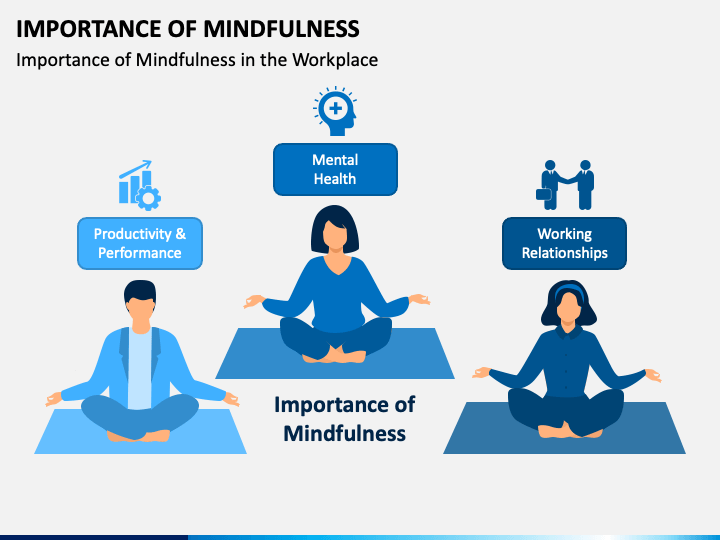Introduction
In today’s fast-paced world, where screens and distractions abound, fostering a sense of mindfulness within your family can lead to profound improvements in well-being. Mindfulness, defined as the practice of paying full attention to the present moment, without judgment, offers a multitude of physical, mental, and emotional benefits for both adults and children. By integrating mindfulness into your family’s daily life, you can create a harmonious environment that promotes better communication, emotional resilience, and overall family happiness.
In today’s fast-paced world, where screens and distractions abound, fostering a sense of mindfulness within your family can lead to profound improvements in well-being. Mindfulness, defined as the practice of paying full attention to the present moment, without judgment, offers a multitude of physical, mental, and emotional benefits for both adults and children. By integrating mindfulness into your family’s daily life, you can create a harmonious environment that promotes better communication, emotional resilience, and overall family happiness.
Stress Reduction: Mindfulness equips family members with powerful tools to manage stress effectively. In a world filled with constant demands and information overload, mindfulness practices such as deep breathing, meditation, and body scans provide moments of calm and mental clarity. This can be especially helpful for parents juggling work, household responsibilities, and children’s needs.
Emotional Resilience: Teaching children mindfulness from a young age helps them develop emotional resilience. They learn to recognize and accept their feelings without judgment, which can prevent emotional outbursts and equip them with lifelong coping strategies for handling life’s challenges.
Improved Concentration: In a digital age where screens vie for attention, mindfulness practices can significantly enhance concentration. This benefit is especially valuable for children, aiding them in schoolwork and extracurricular activities. For adults, increased focus can lead to higher productivity at work and more meaningful interactions at home.
Enhanced Communication: Mindfulness encourages active listening and non-judgmental communication. In family discussions, this means truly hearing one another’s perspectives without jumping to conclusions or reacting impulsively. Improved communication strengthens family bonds and fosters empathy.
Quality Time: Mindfulness facilitates the art of being fully present. When you engage in activities together as a family, like nature walks, board games, or simply sharing stories, you create lasting memories. These moments of togetherness become cherished family traditions that promote happiness and a sense of belonging.
Self-Care: Practicing mindfulness can be a form of self-care for parents. By taking time for self-reflection and self-compassion, adults can recharge and model healthy self-care behaviors for their children. This sets a positive example of how to prioritize well-being in a busy world.
Conflict Resolution: Mindfulness provides tools for managing conflicts in a calm and constructive manner. When disagreements arise, family members can use mindfulness techniques to stay composed, express themselves clearly, and work toward resolution rather than escalation.
Gratitude and Positivity: Mindfulness encourages gratitude practices, which can shift the focus from what’s lacking to what’s abundant in life. Expressing gratitude as a family can create a positive and appreciative atmosphere at home.
Enhanced Sleep: Mindfulness techniques, such as progressive muscle relaxation or guided imagery, can help family members relax before bedtime, promoting better sleep quality. Adequate rest is essential for the physical and mental well-being of everyone in the family.
Cultivating Mindful Habits: By integrating mindfulness into daily routines, such as morning rituals or bedtime routines, you can ensure that mindfulness becomes a natural part of family life. This consistency reinforces the practice and its benefits over time.
In conclusion, fostering mindfulness within your family is a valuable investment in well-being. It equips both adults and children with essential life skills, enhances the quality of relationships, and contributes to a happier and more harmonious family life. By making mindfulness an integral part of your family’s daily routine, you’re not only nurturing individual growth but also creating a supportive and resilient family unit that can thrive in the fast-paced world of today.
Additionally, you can find further information on this topic by visiting this page: Effects of Mindfulness on Psychological Health: A Review of …
Mindfulness is the art of being fully present in the here and now. It’s about paying attention to each moment without passing judgment or getting lost in thoughts about the past or future. This practice encourages awareness, reflection, and acceptance of one’s thoughts, feelings, and surroundings.
For families, mindfulness serves as a powerful tool to combat the stressors of modern life. Here are some compelling reasons why mindfulness is important for family well-being:
“Mindfulness is the art of being fully present in the here and now. It’s about paying attention to each moment without passing judgment or getting lost in thoughts about the past or future. This practice encourages awareness, reflection, and acceptance of one’s thoughts, feelings, and surroundings. For families, mindfulness serves as a powerful tool to combat the stressors of modern life. Here are some compelling reasons why mindfulness is important for family well-being:
Reduced Stress: Mindfulness techniques can help family members manage stress more effectively, leading to a calmer and happier household.
Improved Communication: Mindful listening and speaking can enhance communication within the family, fostering understanding and empathy.
Enhanced Relationships: By being present and attentive, family members can strengthen their bonds and create deeper connections.
Emotional Regulation: Mindfulness helps children and adults alike better understand and regulate their emotions, reducing conflicts.
Resilience: Mindfulness practices teach resilience in the face of life’s challenges, equipping families to navigate tough times together.
Better Focus: Children can benefit from improved concentration and focus, which can aid in their academic and personal development.
Quality Family Time: Mindful activities provide opportunities for meaningful family time and shared experiences.
Healthier Habits: Mindfulness can lead to healthier choices, such as improved eating habits and regular physical activity.
Increased Gratitude: Encouraging gratitude practices can foster a positive outlook and appreciation for life’s blessings.
Lifelong Skills: Teaching mindfulness to children equips them with valuable life skills for managing stress and maintaining well-being throughout their lives.”
For a comprehensive look at this subject, we invite you to read more on this dedicated page: The Effect of Trait Mindfulness on Subjective Well-Being of …

Now that you understand the importance of mindfulness, here are some practical ways to incorporate it into your family’s daily routine:
“Here are some practical ways to incorporate mindfulness into your family’s daily routine:”
If you’d like to dive deeper into this subject, there’s more to discover on this page: Effects of Mindfulness on Psychological Health: A Review of …

Conclusion
Mindfulness is a valuable tool for enhancing family well-being in the digital age. By introducing mindful practices into your family’s routine, you can create an environment that fosters better communication, emotional resilience, and overall happiness. Whether it’s mindful eating, nature walks, or simple breathing exercises, mindfulness offers a path to a more balanced and harmonious family life.
“Mindfulness is a beacon of hope for families navigating the challenges of the digital age. As screens and distractions become increasingly prevalent, integrating mindful practices into your family’s daily life can be a transformative force, cultivating not only individual well-being but also strengthening the family unit as a whole. Here’s an extended perspective on the significance of mindfulness:
Digital Detox Moments: Encourage moments of digital detox within your family. Designate specific times when all screens are put away, and instead, engage in mindful activities like board games, storytelling, or enjoying a meal together without devices. This helps break the cycle of constant digital connection.
Technology as a Mindfulness Tool: Embrace technology as a tool for mindfulness. There are numerous apps and online resources designed to facilitate mindfulness practices, such as guided meditations or apps that remind family members to take mindful breaks from their screens.
Mindful Listening: Teach family members the art of mindful listening. During conversations, encourage everyone to be fully present, actively listening to what each person has to say without judgment or distraction. This fosters deeper connections and understanding within the family.
Gratitude Rituals: Start or end the day with a gratitude ritual where each family member expresses what they are thankful for. This simple practice shifts the focus from what’s lacking to what’s abundant in life, fostering positivity and a sense of togetherness.
Mindful Movement: Incorporate mindful movement into your family’s routine, such as yoga or tai chi. These practices promote physical well-being while also enhancing mindfulness by connecting the body and mind.
Nature Connection: Spend quality time in nature as a family. Nature walks, hikes, or picnics in the great outdoors provide opportunities for mindfulness, allowing everyone to appreciate the beauty and serenity of the natural world.
Mindful Breathing: Teach children and adults alike the power of mindful breathing. Simple breathing exercises can be used to manage stress, calm emotions, and bring the family back to the present moment during moments of tension or distraction.
Empathy-Building Practices: Engage in mindfulness exercises that promote empathy. Activities like ‘mindful storytelling’ where family members share their experiences and emotions can help others understand and relate to different perspectives.
Consistency and Patience: Understand that mindfulness is a skill that develops over time. Be patient with yourselves and each other as you integrate these practices into your family life. Consistency is key to reaping the full benefits.
Open Dialogue: Maintain open dialogue about the impact of digital technology on your family’s well-being. Encourage family members to share their thoughts and feelings about screen time and digital distractions, and collectively find solutions that work for everyone.
By weaving mindfulness into the fabric of your family’s daily life, you not only equip each member with valuable tools for managing the digital age but also create a nurturing environment where communication, resilience, and happiness flourish. Mindfulness becomes the compass guiding your family towards a more balanced and harmonious way of living in the midst of the digital era.”
Additionally, you can find further information on this topic by visiting this page: Effects of Mindfulness on Psychological Health: A Review of …
More links
Don’t stop here; you can continue your exploration by following this link for more details: The Effect of Trait Mindfulness on Subjective Well-Being of …
